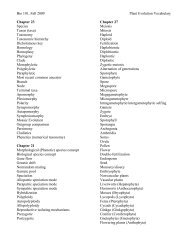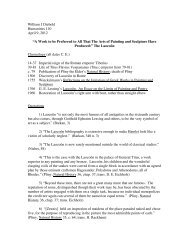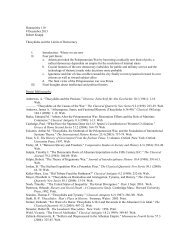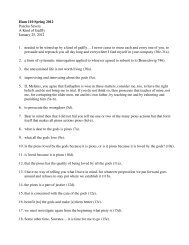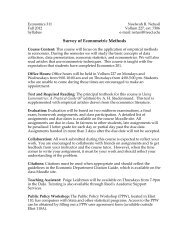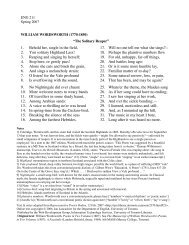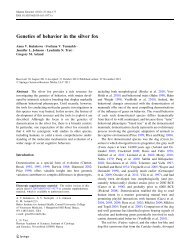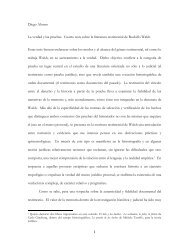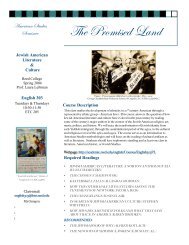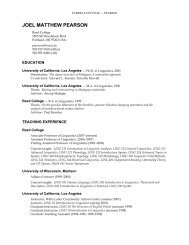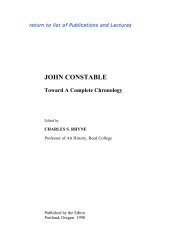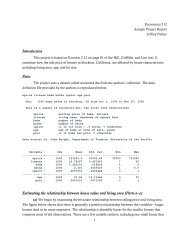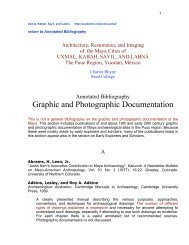REED COLLEGE SCIENCE OUTREACH PROPERTIES OF MATTER
REED COLLEGE SCIENCE OUTREACH PROPERTIES OF MATTER
REED COLLEGE SCIENCE OUTREACH PROPERTIES OF MATTER
You also want an ePaper? Increase the reach of your titles
YUMPU automatically turns print PDFs into web optimized ePapers that Google loves.
16<br />
Building Fruit Batteries (30 minutes)<br />
7. Tell students that today they will be working together in groups of 4 to build<br />
batteries using fruit (either lemons, apples, oranges, or tomatoes). How is this even<br />
possible? Somehow, electrons must be able to travel through the fruit. When this<br />
happens, we say the fruit conducts electricity. It turns out that citric acid (found in tart<br />
fruits) allows electrons to flow more easily through sour fruits than through regular<br />
water.<br />
8. Before you begin, have the students write down their hypotheses to the question,<br />
“Which fruit will make the most effective battery?” in the indicated spots on their<br />
worksheets.<br />
9. Now distribute the supplies to each table (4 fruits, 4 copper nails, 8 zinc nails and 5<br />
alligator clip connectors— save the LED for later). Tell the students that you will be<br />
giving them step-by-step directions, so they need to be very good listeners. Let the<br />
students know not to eat the fruits, as they may get contaminated during the activity.<br />
Instruct each student to take 1 fruit, 1 of copper nail, 2 zinc nails and 1 alligator clip<br />
connector. As you give the students instructions, you should also follow along on the<br />
overhead, while your teammates help the students.<br />
10. When the class is ready, have the students take their fruits into their hands and roll<br />
the fruit between their palms while gently squeezing. Explain that this will soften up<br />
the fruit and make it easier for current to flow through it. (Try to avoid rupturing the<br />
skin of the fruit if you can.)<br />
11. Now have students take their copper nails and push it gently about 1” into one side<br />
of the fruit. Then have the students take one of the zinc nails and push it about 1” into<br />
the other side of the fruit so that the tips of the nails are close, but not touching. Add<br />
the second zinc nail right next to the first (Fig 1).<br />
Fig. 1. How to insert nails into the fruit. The nails can be a bit closer than in the picture above,<br />
but make sure they are not touching or the battery won’t work!<br />
12. Once everyone has prepared his or her fruit with nails, remind the students that<br />
these fruits are actually little batteries. Copper holds onto its electrons more forcefully<br />
than zinc does, so the electrons want to flow from the zinc nail to the copper nail. (This<br />
is like an electron tug-of-war between copper and zinc, and copper is winning!)<br />
13. Tell students that scientists measure how strong a battery is by using a device called<br />
a voltmeter. (Hold up a voltmeter for everyone to see.) We can use this device to<br />
measure the voltage of our fruit batteries. Remind students what voltage is by having a<br />
student define it for you. (Voltage is a measure of how strongly the battery is pushing<br />
on the electrons to create a current.) Demonstrate how a voltmeter works on the<br />
overhead by holding the two probes of the voltmeter against the two nails on the



